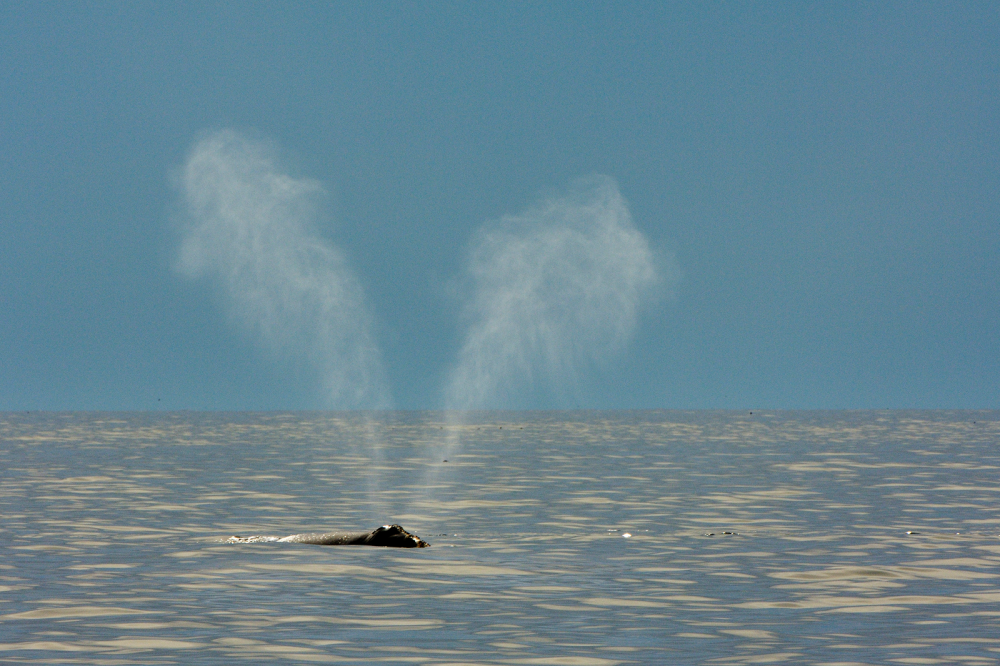Detangling the Risks of Fishing Line for Right Whales

We have many reasons to appreciate the role of modern technology in today’s fisheries. Electronics, equipment upgrades, and other technological advances have led to more efficient, effective, and economical fisheries. However, in the case of modern fishing line, these technological advances have at times come at a serious cost.
Unlike the natural hemp and sisal lines used in decades past, modern fishing line is made from polypropylene, a synthetic material that makes fishing lines and ropes much stronger and more durable than ever before.
Stronger fishing lines may lead to more effective fishing, but when animals – specifically the critically endangered North Atlantic right whale – encounter this fishing line, the risk of entanglement and death is high.
For endangered right whales, stakes are high
This threat to right whales has been the focus of Amy Knowlton, a research scientist at the New England Aquarium, for several years. In an article published by Canada’s CBC on fishing line and the risk for lethal entanglement, Knowlton is quoted saying how this risk is “the biggest threat to these animals right now . . . and unless we can fix it, they could go extinct.”
Knowlton describes how this fishing line frequently gets into their mouths when right whales come in contact with it, which causes them to panic and roll around in an attempt to get free. This motion only causes the line to wrap more around their body, and potentially their flukes, impairing their ability to eat and move.
The frequency of this type of entanglement is alarming, with more than 80 percent of the right whale population showing signs of scarring from synthetic fishing lines. Often, the whales cannot break free from the constraining fishing line because of the incredible strength of the new materials used to make it. This fatal entrapment is a leading cause of death for the already struggling North Atlantic right whale population.
Finding a balanced solution
Knowlton is optimistic about finding solutions for this problem, noting that cooperation and collaboration between the fishing industry and manufacturers could lead to the development of a material for lines and rope that can be strong enough for its intended purpose, but not enough to endanger the lives of right whales.
That all involved parties are invested in finding a solution to this problem exemplifies the foundation of effective ocean management that can be accomplished through a regional ocean plan. While this is just a small micro example of interested parties working together (the regional ocean plan won’t identify solutions for fishing line), on a macro level, these principles can be applied to better management of our ocean resources through collaboration and the use of data. With better information and enhanced coordination, we’re much more likely to be able to effectively identify solutions to these types of challenges.
Ocean planning – a process dedicated to finding solutions to problems before they happen by creating a framework to better anticipate needs, set priorities, and make decisions regarding regional ocean uses – has the potential to positively inform these important conversations.
On a small scale, Knowlton, the fishermen, and the industry are finding a solution to address this specific issue. But on a large scale, a developed ocean plan (that all ocean users abide by) can include acknowledgement of fishing grounds and right whale migration routes and other important factors, allowing for a better mutual understanding of what’s at stake – and pave the way for future decision-making that is better informed and more effective for all involved parties.
The Northeast Regional Ocean Plan draft will be available soon, and we all have a responsibility to take part it in it – for the sake of the endangered right whale, our fisheries and coastal economies, and our ocean ecosystems.
Read more about the current status of the Northeast Regional Ocean Plan.





Recent Comments